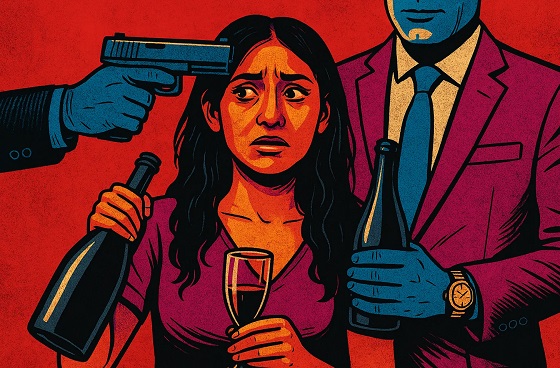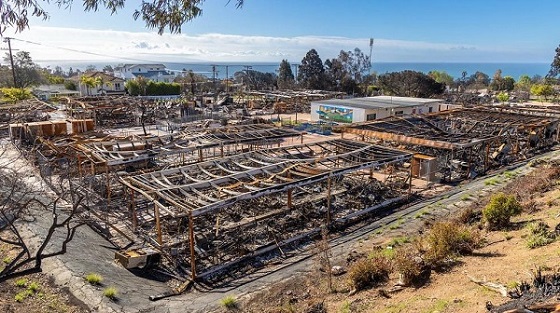Break The Needle
Canada-US border mayors react to new border security initiative
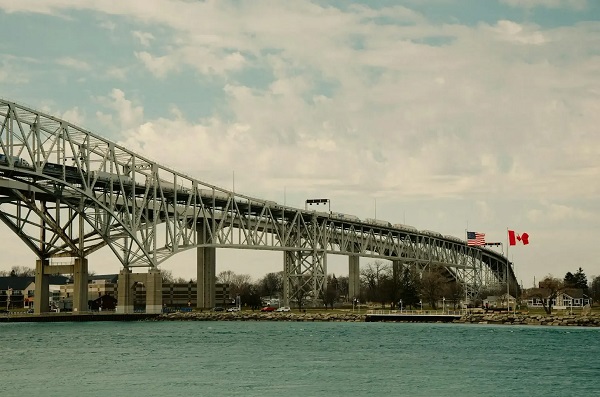
US President Donald Trump has linked his threat to impose 25-per-cent tariffs on Canadian goods to Canada’s failure to address drug trafficking and illegal migration at the Canada-US border.
Ontario has responded with a border security initiative, Operation Deterrence, which is drawing tepid support from Ontario mayors of border communities.
“Absence of leadership from Ottawa has created this [scenario] where the provinces are all going in to be Captain, or Miss Captain, Canada,” said Mike Bradley, the mayor of Sarnia, Ont., a city of 75,000 that sits on the Ontario-Michigan border.
“[But] anything that helps on the policing side to deal with the black plague of fentanyl is welcome,” Bradley said.
Operation Deterrence
On Dec. 6, Ontario redeployed 200 Ontario Provincial Police officers to unpoliced border areas near the 14 official Ontario-US border crossings, which are staffed by the Canada Border Services Agency.
Officers are using aircraft, drones, boats, off-road vehicles and foot patrols to “deter, detect and disrupt” the illegal trafficking of drugs, guns and people, a Jan. 7 provincial press release says.
Premier Ford’s office and Ontario Solicitor General Michael Kerzner declined to provide further details about the operation in response to requests for comment.
But a spokesperson for the Ontario RCMP said there is little evidence that fentanyl trafficking is a significant issue at the Canada-US border.
“There is limited to no evidence or data from law enforcement agencies in the U.S. or Canada to support the claim that Canadian-produced fentanyl is an increasing threat to the U.S.,” the spokesperson told Canadian Affairs in an emailed statement.
The spokesperson highlighted that fentanyl trafficking frequently occurs by mail, rather than at physical border crossings.
“Reports state fentanyl produced in Canada is being exported in micro shipments, most often through the mail. Micro traffickers are most often found on the dark web,” the spokesperson said.
As Canadian Affairs reported last week, seizures of fentanyl at the Canada-US border remain relatively low. But Canadian authorities have seized significant volumes of precursor chemicals used in the production of fentanyl, and key sources say Canada is a major player in the global fentanyl trade.
Data also show illegal migration is a concern along the Canada-US border.
The U.S. Customs and Border Protection reported nearly 200,000 cases of individuals in Canada trying to illegally enter the US in the 2024 fiscal year.
Canada Border Services Agency data indicate just under 5,000 individuals were detained trying to enter Canada from the US in 2023-24.
Borderlands
Jim Diodati, the mayor of Niagara Falls, says he is supportive of Ontario launching Operation Deterrence in response to Trump’s tariff threats.
“I’m glad at least we’re reacting,” he said. “The concerns, of course, are that things are slipping through the cracks … both for drugs, guns and human smuggling as well.”
But Diodati stressed that border concerns go both ways. He hopes Operation Deterrence will also address firearms trafficking from the US into Canada.
“Ninety percent of illegal guns that come into Canada come from the US side, across our borders,” he said.
Diodati blames Ottawa for underfunding the Canada Border Services Agency, the federal agency responsible for border security and immigration enforcement. “CBSA needs more resources,” he said.
“The US sees our border as porous, not as secure as theirs, and now, with the incoming president, they’re looking to punish us over it.”
Bev Hand is the mayor of Point Edward, a 2,500-person village located a short drive north of Sarnia, on the southern tip of Lake Huron. The community connects to Port Huron, Mich., by the Blue Water Bridge, a key Canada-US border crossing.
Hand expressed cautious support for Operation Deterrence’s aims of addressing drug trafficking.
She noted that, since 2019, there have been 16 major drug busts at the Point Edward border, including two significant cocaine seizures by U.S. Customs and Border Protection. In December 2023, US authorities found nearly 500 kg of cocaine in a truck entering the US. In August 2024, US authorities discovered over 120 kg of cocaine hidden in the wall of a truck bound for Canada.
“Fifteen of the seizures were in transport trucks,” she said. “This represents millions of dollars in illegal drugs, and we don’t know what wasn’t captured.”
Hand noted, however, that funds allocated to border security might be better spent on addressing the root causes of drug trafficking, such as addiction.
In December, Ottawa announced it would spend an additional $1.3 billion over six years on enhancing its border security. Ontario has not disclosed how much Operation Deterrence will cost.
Like Diodati, Hand also emphasized the role Operation Deterrence could play in helping to curb firearms trafficking from the US.
She referenced a May 2022 case where a resident discovered a bag with 11 handguns in a tree near Port Lambton, Ont., a city approximately 15 kilometres south of Point Edward.
“The package had fallen from a drone that is assumed to have come from the US side,” she said.
Our content is always free. Subscribe to get BTN’s latest news and analysis, or donate to our journalism fund.
‘Fentanyl Czar’
Bradley, Sarnia’s mayor, said border security initiatives must be balanced against the need to facilitate trade, particularly at critical crossings like the CN Rail tunnel — which runs beneath the St. Clair River and connects Canada to Michigan — and Blue Water Bridge.
“We want security, but you also want trade, and that’s the balance right now that we’re struggling with,” Bradley said.
A 13-year review by professors at Carleton University found that tighter Canada-US border security following the 9/11 attacks increased inspection times and delays at the border. This has “negatively impacted” bilateral trade and cost the Canadian economy billions in foregone economic opportunities and productivity.
Diodati, of Niagara Falls, said he would prefer to see Canada and the US take a bilateral approach to border security that focuses on bolstering security around the continent.
“We want to take a perimeter approach around North America, rather than the borders between us,” he said.
While diplomatic relations between Canada and the US are tense, further collaboration on border security may be on the horizon.
On Feb. 3, Trump paused the imposition of tariffs on Canada after Canadian Prime Minister Justin Trudeau promised Canada would send nearly 10,000 frontline personnel to protect the border.
“Canada is making new commitments to appoint a Fentanyl Czar, we will list cartels as terrorists, ensure 24/7 eyes on the border, launch a Canada-U.S. Joint Strike Force to combat organized crime, fentanyl and money laundering,” Trudeau wrote in a post on social media platform X.
“I have also signed a new intelligence directive on organized crime and fentanyl and we will be backing it with $200 million.
“Proposed tariffs will be paused for at least 30 days while we work together.”
This article was produced through the Breaking Needles Fellowship Program, which provided a grant to Canadian Affairs, a digital media outlet, to fund journalism exploring addiction and crime in Canada. Articles produced through the Fellowship are co-published by Break The Needle and Canadian Affairs.
Our content is always free – but if you want to help us commission more high-quality journalism, consider getting a voluntary paid subscription.
Addictions
Canada must make public order a priority again
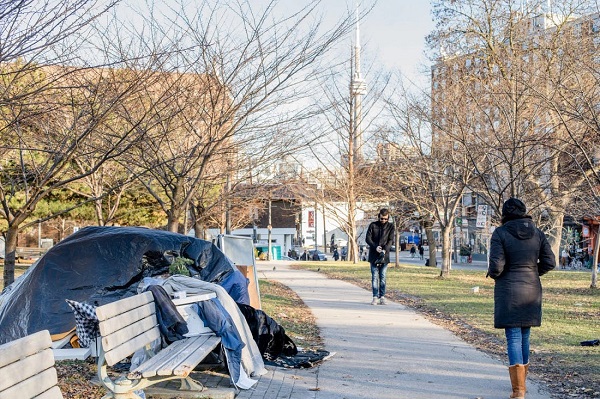
A Toronto park
Public disorder has cities crying out for help. The solution cannot simply be to expand our public institutions’ crisis services
[This editorial was originally published by Canadian Affairs and has been republished with permission]
This week, Canada’s largest public transit system, the Toronto Transit Commission, announced it would be stationing crisis worker teams directly on subway platforms to improve public safety.
Last week, Canada’s largest library, the Toronto Public Library, announced it would be increasing the number of branches that offer crisis and social support services. This builds on a 2023 pilot project between the library and Toronto’s Gerstein Crisis Centre to service people experiencing mental health, substance abuse and other issues.
The move “only made sense,” Amanda French, the manager of social development at Toronto Public Library, told CBC.
Does it, though?
Over the past decade, public institutions — our libraries, parks, transit systems, hospitals and city centres — have steadily increased the resources they devote to servicing the homeless, mentally ill and drug addicted. In many cases, this has come at the expense of serving the groups these spaces were intended to serve.
For some communities, it is all becoming too much.
Recently, some cities have taken the extraordinary step of calling states of emergency over the public disorder in their communities. This September, both Barrie, Ont. and Smithers, B.C. did so, citing the public disorder caused by open drug use, encampments, theft and violence.
In June, Williams Lake, B.C., did the same. It was planning to “bring in an 11 p.m. curfew and was exploring involuntary detention when the province directed an expert task force to enter the city,” The Globe and Mail reported last week.
These cries for help — which Canadian Affairs has also reported on in Toronto, Ottawa and Nanaimo — must be taken seriously. The solution cannot simply be more of the same — to further expand public institutions’ crisis services while neglecting their core purposes and clientele.
Canada must make public order a priority again.
Without public order, Canadians will increasingly cease to patronize the public institutions that make communities welcoming and vibrant. Businesses will increasingly close up shop in city centres. This will accelerate community decline, creating a vicious downward spiral.
We do not pretend to have the answers for how best to restore public order while also addressing the very real needs of individuals struggling with homelessness, mental illness and addiction.
But we can offer a few observations.
First, Canadians must be willing to critically examine our policies.
Harm-reduction policies — which correlate with the rise of public disorder — should be at the top of the list.
The aim of these policies is to reduce the harms associated with drug use, such as overdose or infection. They were intended to be introduced alongside investments in other social supports, such as recovery.
But unlike Portugal, which prioritized treatment alongside harm reduction, Canada failed to make these investments. For this and other reasons, many experts now say our harm-reduction policies are not working.
“Many of my addiction medicine colleagues have stopped prescribing ‘safe supply’ hydromorphone to their patients because of the high rates of diversion … and lack of efficacy in stabilizing the substance use disorder (sometimes worsening it),” Dr. Launette Rieb, a clinical associate professor at the University of British Columbia and addiction medicine specialist recently told Canadian Affairs.
Yet, despite such damning claims, some Canadians remain closed to the possibility that these policies may need to change. Worse, some foster a climate that penalizes dissent.
“Many doctors who initially supported ‘safe supply’ no longer provide it but do not wish to talk about it publicly for fear of reprisals,” Rieb said.
Second, Canadians must look abroad — well beyond the United States — for policy alternatives.
As The Globe and Mail reported in August, Canada and the U.S. have been far harder hit by the drug crisis than European countries.
The article points to a host of potential factors, spanning everything from doctors’ prescribing practices to drug trade flows to drug laws and enforcement.
For example, unlike Canada, most of Europe has not legalized cannabis, the article says. European countries also enforce their drug laws more rigorously.
“According to the UN, Europe arrests, prosecutes and convicts people for drug-related offences at a much higher rate than that of the Americas,” it says.
Addiction treatment rates also vary.
“According to the latest data from the UN, 28 per cent of people with drug use disorders in Europe received treatment. In contrast, only 9 per cent of those with drug use disorders in the Americas received treatment.”
And then there is harm reduction. No other country went “whole hog” on harm reduction the way Canada did, one professor told The Globe.
If we want public order, we should look to the countries that are orderly and identify what makes them different — in a good way.
There is no shame in copying good policies. There should be shame in sticking with failed ones due to ideology.
Our content is always free – but if you want to help us commission more high-quality journalism,
consider getting a voluntary paid subscription.
Addictions
No, Addicts Shouldn’t Make Drug Policy
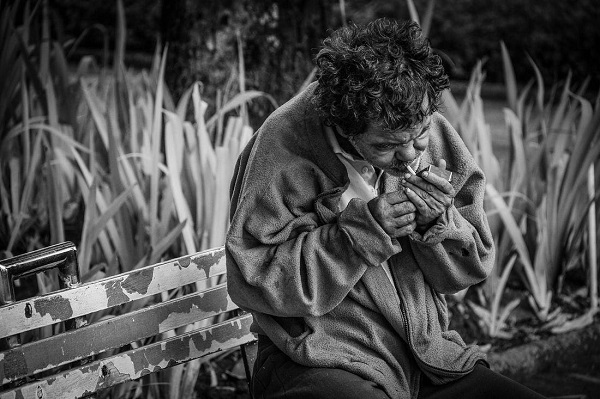
By Adam Zivo
Canada’s policy of deferring to the “leadership” of drug users has proved predictably disastrous. The United States should take heed.
[This article was originally published in City Journal, a public policy magazine and website published by the Manhattan Institute for Policy Research]
Progressive “harm reduction” advocates have insisted for decades that active users should take a central role in crafting drug policy. While this belief is profoundly reckless—akin to letting drunk drivers set traffic laws—it is now entrenched in many left-leaning jurisdictions. The harms and absurdities of the position cannot be understated.
While the harm-reduction movement is best known for championing public-health interventions that supposedly minimize the negative effects of drug use, it also has a “social justice” component. In this context, harm reduction tries to redefine addicts as a persecuted minority and illicit drug use as a human right.
This campaign traces its roots to the 1980s and early 1990s, when “queer” activists, desperate to reduce the spread of HIV, began operating underground needle exchanges to curb infections among drug users. These exchanges and similar efforts allowed some more extreme LGBTQ groups to form close bonds with addicts and drug-reform advocates. Together, they normalized the concept of harm reduction, such that, within a few years, needle exchanges would become officially sanctioned public-health interventions.
The alliance between these more radical gay rights advocates and harm-reduction proponents proved enduring. Drug addiction remained linked to HIV, and both groups shared a deep hostility to the police, capitalism, and society’s “moralizing” forces.
In the 1990s, harm-reduction proponents imitated the LGBTQ community’s advocacy tactics. They realized that addicts would have greater political capital if they were considered a persecuted minority group, which could legitimize their demands for extensive accommodations and legal protections under human rights laws. Harm reductionists thus argued that addiction was a kind of disability, and that, like the disabled, active users were victims of social exclusion who should be given a leading role in crafting drug policy.
These arguments were not entirely specious. Addiction can reasonably be considered a mental and physical disability because illicit drugs hijack users’ brains and bodies. But being disabled doesn’t necessarily mean that one is part of a persecuted group, much less that one should be given control over public policy.
More fundamentally, advocates were wrong to argue that the stigma associated with drug addiction was senseless persecution. In fact, it was a reasonable response to anti-social behavior. Drug addiction severely impairs a person’s judgement, often making him a threat to himself and others. Someone who is constantly high and must rob others to fuel his habit is a self-evident danger to society.
Despite these obvious pitfalls, portraying drug addicts as a persecuted minority group became increasingly popular in the 2000s, thanks to several North American AIDS organizations that pivoted to addiction work after the HIV epidemic subsided.
In 2005, the Canadian HIV/AIDS Legal Network published a report titled “Nothing about us without us.” (The nonprofit joined other groups in publishing an international version in 2008.) The 2005 report included a “manifesto” written by Canadian drug users, who complained that they were “among the most vilified and demonized groups in society” and demanded that policymakers respect their “expertise and professionalism in addressing drug use.”
The international report argued that addiction qualified as a disability under international human rights treaties, and called on governments to “enact anti-discrimination or protective laws to reduce human rights violations based on dependence to drugs.” It further advised that drug users be heavily involved in addiction-related policy and decision-making bodies; that addict-led organizations be established and amply funded; and that “community-based organizations . . . increase involvement of people who use drugs at all levels of the organization.”
While the international report suggested that addicts could serve as effective policymakers, it also presented them as incapable of basic professionalism. In a list of “do’s and don’ts,” the authors counseled potential employers to pay addicts in cash and not to pass judgment if the money were spent on drugs. They also encouraged policymakers to hold meetings “in a low-key setting or in a setting where users already hang out,” and to avoid scheduling meetings at “9 a.m., or on welfare cheque issue day.” In cases where addicts must travel for policy-related work, the report recommended policymakers provide “access to sterile injecting equipment” and “advice from a local person who uses drugs.”
The international report further asserted that if an organization’s employees—even those who are former drug users—were bothered by the presence of addicts, then management should refer those employees to counselling at the organization’s expense. “Under no circumstances should [drug addicts] be reprimanded, singled out or made to feel responsible in any way for the triggering responses of others,” stressed the authors.
Reflecting the document’s general hostility to recovery, the international report emphasized that former drug addicts “can never replace involvement of active users” in public policy work, because people in recovery “may be somewhat disconnected from the community they seek to represent, may have other priorities than active users, may sometimes even have different and conflicting agenda, and may find it difficult to be around people who currently use drugs.”
Subscribe for free to get BTN’s latest news and analysis – or donate to our investigative journalism fund.
The messaging in these reports proved highly influential throughout the 2000s and 2010s. In Canada, federal and provincial human rights legislation expanded to protect active addicts on the basis of disability. Reformers in the United States mirrored Canadian activists’ appeals to addicts’ “lived experience,” albeit with less success. For now, American anti-discrimination protections only extend to people who have a history of addiction but who are not actively using drugs.
The harm reduction movement reached its zenith in the early 2020s, after the Covid-19 pandemic swept the world and instigated a global spike in addiction. During this period, North American drug-reform activists again promoted the importance of treating addicts like public-health experts.
Canada was at the forefront of this push. For example, the Canadian Association of People Who Use Drugs released its “Hear Us, See Us, Respect Us” report in 2021, which recommended that organizations “deliberately choose to normalize the culture of drug use” and pay addicts $25-50 per hour. The authors stressed that employers should pay addicts “under the table” in cash to avoid jeopardizing access to government benefits.
These ideas had a profound impact on Canadian drug policy. Throughout the country, public health officials pushed for radical pro-drug experiments, including giving away free heroin-strength opioids without supervision, simply because addicts told researchers that doing so would be helpful. In 2024, British Columbia’s top doctor even called for the legalization of all illicit drugs (“non-medical safer supply”) primarily on the basis of addict testimonials, with almost no other supporting evidence.
For Canadian policymakers, deferring to the “lived experiences” and “leadership” of drug users meant giving addicts almost everything they asked for. The results were predictably disastrous: crime, public disorder, overdoses, and program fraud skyrocketed. Things have been less dire in the United States, where the harm reduction movement is much weaker. But Americans should be vigilant and ensure that this ideology does not flower in their own backyard.
Subscribe to Break The Needle.
Our content is always free – but if you want to help us commission more high-quality journalism,
consider getting a voluntary paid subscription.
-

 Frontier Centre for Public Policy2 days ago
Frontier Centre for Public Policy2 days agoCanada’s Democracy Is Running On Fumes
-

 Education2 days ago
Education2 days agoClassroom Size Isn’t The Real Issue
-

 illegal immigration2 days ago
illegal immigration2 days ago$4.5B awarded in new contracts to build Smart Wall along southwest border
-

 Business2 days ago
Business2 days agoYour $350 Grocery Question: Gouging or Economics?
-

 Media2 days ago
Media2 days agoResponse to any budget sleight of hand will determine which audience media have decided to serve
-

 International2 days ago
International2 days agoMelania Trump quietly reunites children divided by Ukraine war
-

 Business22 hours ago
Business22 hours agoTruckers see pay surge as ICE sweeps illegal drivers off U.S. highways
-

 Brownstone Institute21 hours ago
Brownstone Institute21 hours agoTrump Covets the Nobel Peace Prize


